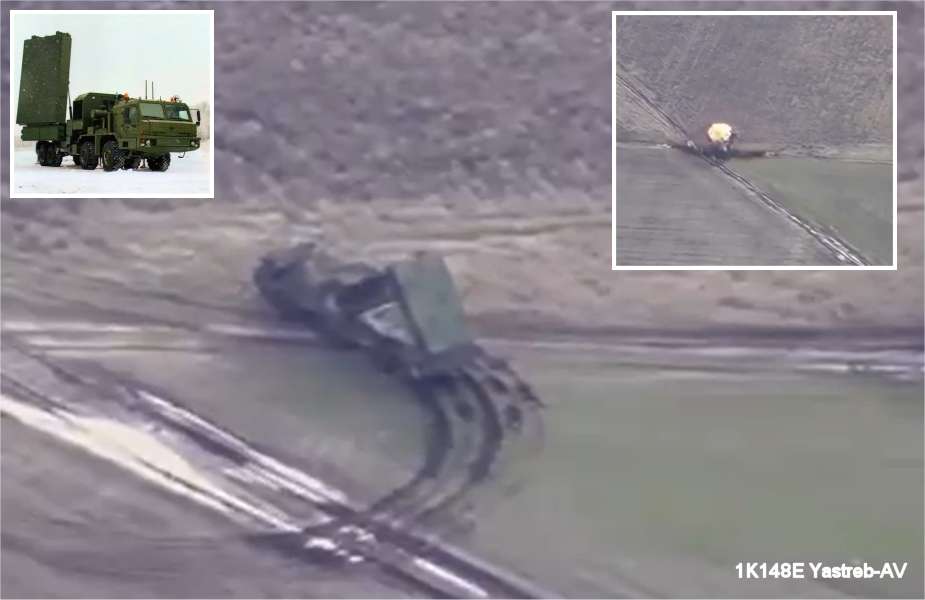The Ukrainian armed forces reported via Twitter on January 2, 2024, the destruction of Russia's most advanced counter-battery radar system, the 1K148E Yastreb-AV, recently deployed for the first time in the Northern Military Region. The Ukrainian forces are believed to have used a drone and potentially SIGINT capabilities to locate the radar about 31 kilometers from the Ukrainian front lines and 58 kilometers east of Kherson. Subsequently, the Ukrainian forces reportedly launched two targeted attacks, likely with precision shells or rockets fired from multiple launch rocket systems (MLRS) such as the M142 HIMARS or M270 MLRS.
Follow Army Recognition on Google News at this link

Russian 1K148E Yastreb-AV counter-battery radar system. (Picture source: Ukraine MoD)
The news of the presumed destruction of the state-of-the-art Russian 1K148E Yastreb-AV radar system took everyone by surprise. Indeed, the 1K148E Yastreb-AV was reportedly destroyed in less than 24 hours on the Ukrainian front following its introduction by the Russian Ministry of Defense. In conjunction with the Zoo-1M complex, the Yastreb-AV had been operational for less than 24 hours, automatically locating the launch points of multiple rocket launchers, missiles, and Ukrainian artillery. Although the radar does not appear to have been directly hit, images show smoke at the rear of the cabin, strongly suggesting its destruction.
The specifications of the 1K148 Yastreb-AV artillery reconnaissance complex have not yet been disclosed, with tests having been completed at the end of 2021 or the beginning of 2022. It was first presented at the international Army-2022 forum. This radar complex, equipped with a phased array antenna, is capable of automatically tracking the trajectory of shells fired by enemy artillery, thus determining the exact coordinates of their positions.
This cutting-edge system was specially designed to automatically detect rocket launches, missile strikes, and artillery fire. With its rapid data processing capability, this system would allow for an immediate response by targeting enemy offensive systems.
However, according to Russian sources, the Yastreb-AV counter-battery radar represents a significant evolution in Russian artillery detection capabilities, offering remarkable performance and features. With an extended detection range of up to 40 km, the Yastreb-AV stands out distinctly from current systems, including the Russian "Zoo" radar with its 23 km range, and the Western Firedinder "FayaFanda" system, limited to 24 km. Its precision in coordinate determination is also impressive, with a deviation reduced to just 5 to 10 meters, compared to the 20 to 30 meters of current systems. This improvement marks a considerable advance over the current accuracy of the Zoo, which is 30 to 40 meters. The likely use of an Active Phased Array Radar (AFAR) in the Yastreb-AV contributes to this significant increase in accuracy and detection range.
Mounted on an 8x8 BAZ-6910 chassis, the 1K148E Yastreb-AV is shrouded in mystery in terms of its technical specifications. Nevertheless, sources estimate the loss to Russia at $250 million (approximately €228.2 million), marking a significant financial and strategic setback for the Russian military.
The rapid destruction of this counter-battery radar system highlights the vulnerability of Russian military equipment to Western weapons supplied by NATO to Ukrainian forces. This event sheds light on the effectiveness of Ukraine's reconnaissance and precision strike strategies, as well as the challenges Russia faces in managing its advanced equipment on the battlefield.















